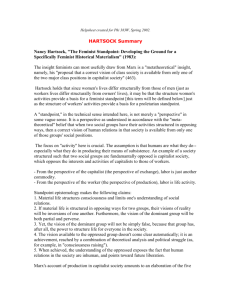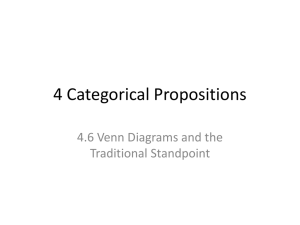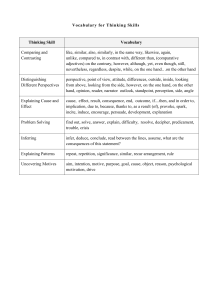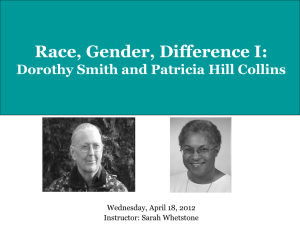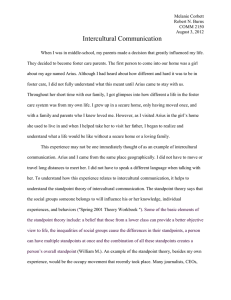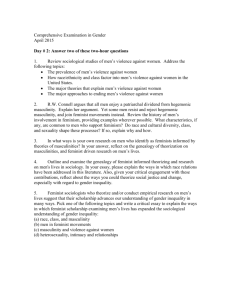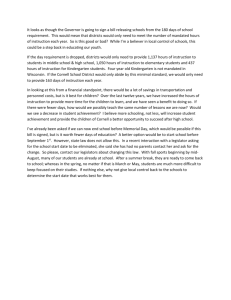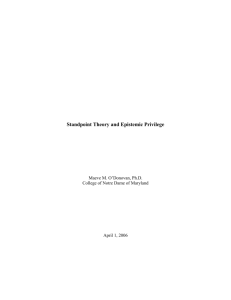worksheet on Hartsock.
advertisement
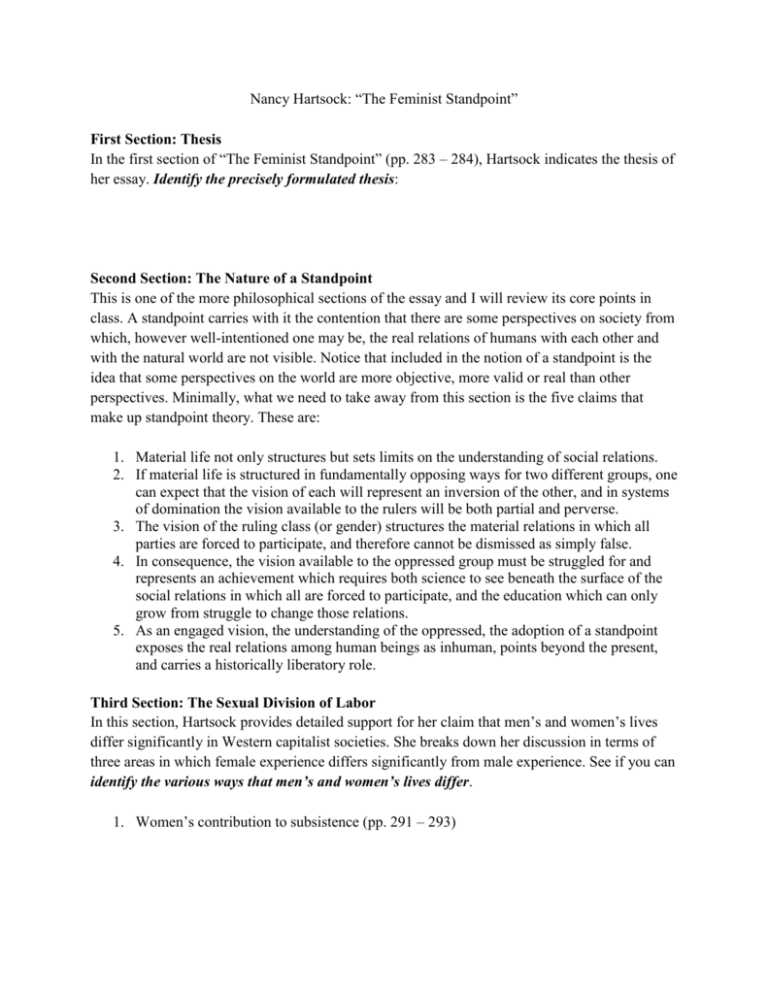
Nancy Hartsock: “The Feminist Standpoint” First Section: Thesis In the first section of “The Feminist Standpoint” (pp. 283 – 284), Hartsock indicates the thesis of her essay. Identify the precisely formulated thesis: Second Section: The Nature of a Standpoint This is one of the more philosophical sections of the essay and I will review its core points in class. A standpoint carries with it the contention that there are some perspectives on society from which, however well-intentioned one may be, the real relations of humans with each other and with the natural world are not visible. Notice that included in the notion of a standpoint is the idea that some perspectives on the world are more objective, more valid or real than other perspectives. Minimally, what we need to take away from this section is the five claims that make up standpoint theory. These are: 1. Material life not only structures but sets limits on the understanding of social relations. 2. If material life is structured in fundamentally opposing ways for two different groups, one can expect that the vision of each will represent an inversion of the other, and in systems of domination the vision available to the rulers will be both partial and perverse. 3. The vision of the ruling class (or gender) structures the material relations in which all parties are forced to participate, and therefore cannot be dismissed as simply false. 4. In consequence, the vision available to the oppressed group must be struggled for and represents an achievement which requires both science to see beneath the surface of the social relations in which all are forced to participate, and the education which can only grow from struggle to change those relations. 5. As an engaged vision, the understanding of the oppressed, the adoption of a standpoint exposes the real relations among human beings as inhuman, points beyond the present, and carries a historically liberatory role. Third Section: The Sexual Division of Labor In this section, Hartsock provides detailed support for her claim that men’s and women’s lives differ significantly in Western capitalist societies. She breaks down her discussion in terms of three areas in which female experience differs significantly from male experience. See if you can identify the various ways that men’s and women’s lives differ. 1. Women’s contribution to subsistence (pp. 291 – 293) 2. Women’s contribution to childrearing (pp. 293 – 294) 3. Women’s sense of self (pp. 294 – 295) Fourth Section: Abstract Masculinity and the Feminist Standpoint In this section, Hartsock does several things. 1. Hartsock describes how abstract masculinity structures Western social relations and modes of thought (pp. 296 – 298). See if you can identify the impact that abstract masculinity has had on our modes of thought (our consciousness). 2. She returns to the five core claims of standpoint theory and shows how female experience can give rise to a unique feminist standpoint. a. Item 1, p. 299 b. Item 2, pp. 299 – 302: This is one of Hartsock’s more interesting discussions. Her claim is that there is something perverse and destructive about abstract masculinity. Can you identify what it is? c. Item 3, p. 302 d. Item 4, pp. 302 – 303 e. Item 5, pp. 303 – 304 3. Hartsock’s goal: a revolutionary transformation of society into a society without institutionalized gender differences (304). What do you think about this goal?
